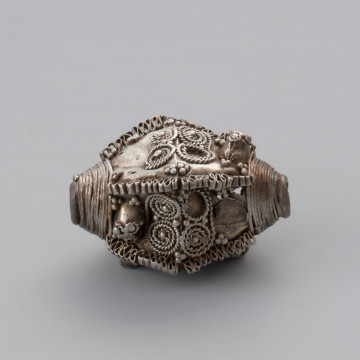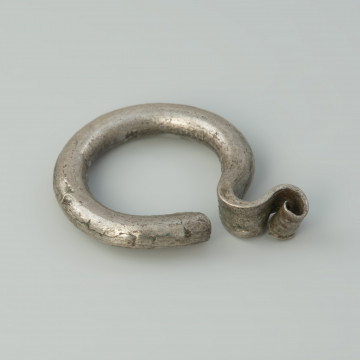
Silver bead
951 — 1000
National Museum in Szczecin
Part of the collection: Middle Ages
The decorative button comprised a part of a hoard discovered during agricultural works in 1859 in Kurów, Koszalin district. Silver coins and ornaments from the late 10th century were placed in a clay vessel. Silver buttons are decorative elements which have many applications. They could be used as appliqués sewn on to clothes or pendants, or be part of larger decorations, such as earrings, they could also be attached to headbands or scarves. A round silver button from Kurów, which has a diameter of 1.75 centimetres, is hollow inside. Its entire surface is covered with silver granules. The technique of decorating the surface with tiny granules is referred to as granulation, and it was used to create various floral and geometric ornaments. This technique dates back to the ancient Greeks and Etruscans. Granules were obtained by pouring molten metal onto water or charcoal. The metal splashed and solidified to form round pieces of various sizes, which were then sorted on sieves with various sizes. Size-matched granules were attached to the surface of the ornament by soldering in order to obtain previously designed patterns.
Ewa Górkiewicz-Bucka
Author / creator
Dimensions
cały obiekt: height: 1.75 cm
Object type
button, jewellery, adornment
Technique
granulation, forging
Material
silver
Origin / acquisition method
legal transfer
Creation time / dating
Creation / finding place
Owner
Muzeum Narodowe w Szczecinie
Identification number
Location / status

951 — 1000
National Museum in Szczecin

966 — 1100
National Museum in Szczecin

1055 — 1100
National Museum in Szczecin
DISCOVER this TOPIC
Museum of King Jan III's Palace at Wilanów
DISCOVER this PATH
Educational path